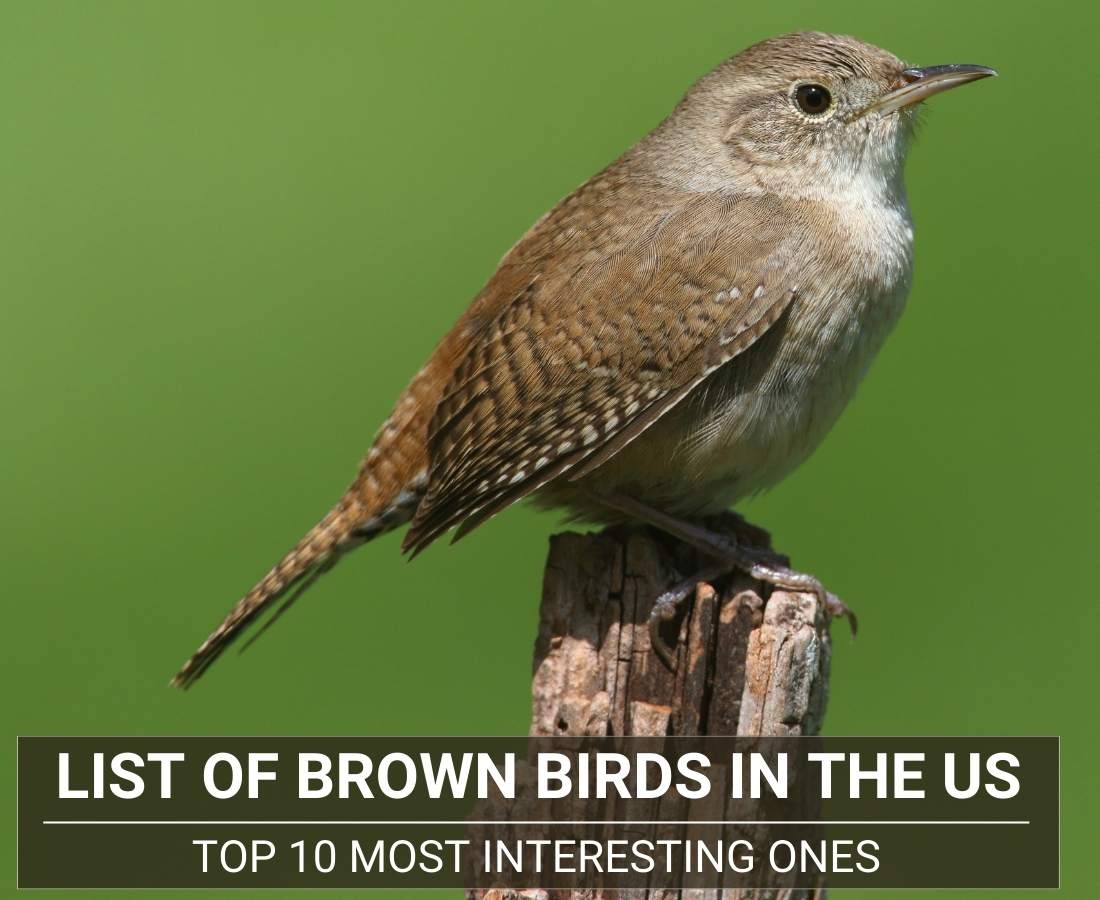It is usual, for new birders, that one of the most difficult groups to identify are the brown birds and it is not for less, they are quite common and there is a great variety, especially in the United States.
Table of Contents
For that reason in this post, we have compiled a list of brown birds in the US – complete with pictures and interesting facts.
1. Mourning Dove
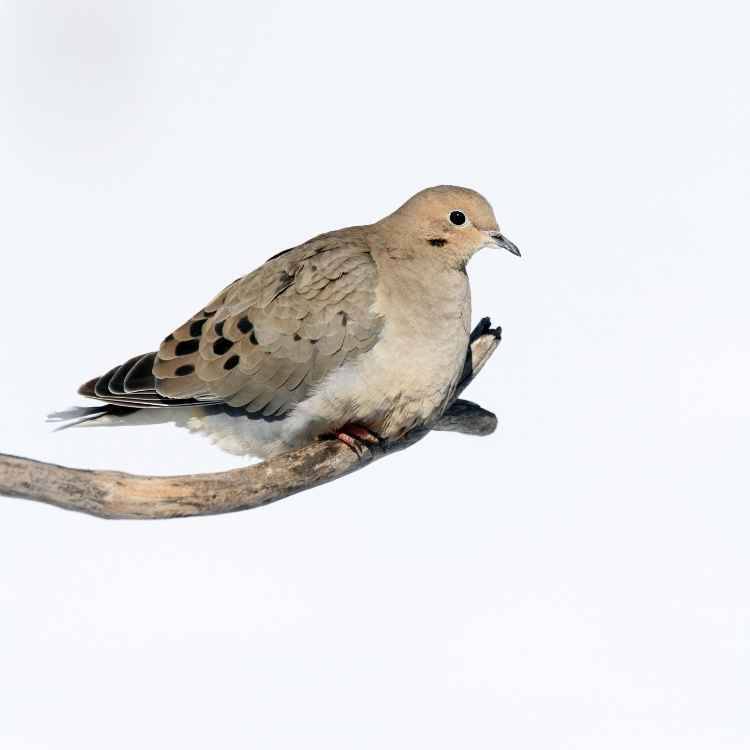
Similar to a pigeon but more elegant.
- Name: Zenaida macroura, the name of the Mourning Dove describes its hoopoe.
- Family: Columbidae.
- Size: 9-13 inches.
- Wingspan: 15-18 inches
- Weight: 120 g.
- Body: slender, with a small head, thin beak, and a long, pointed tail.
- Diet: seeds of cultivated grains, weeds, and also grasses, ragweed, and many other plants.
- Habitat: mourning doves live in agricultural fields to lightly wooded areas such as farmland, suburbs, prairies, and deserts.
Fun facts
- Thanks to their wing design, they can fly up to 55mph.
- They usually live between 2 – 7 years but a Mourning dove managed to live more than 30 years.
- They usually have a partner for life.
2. House Sparrow
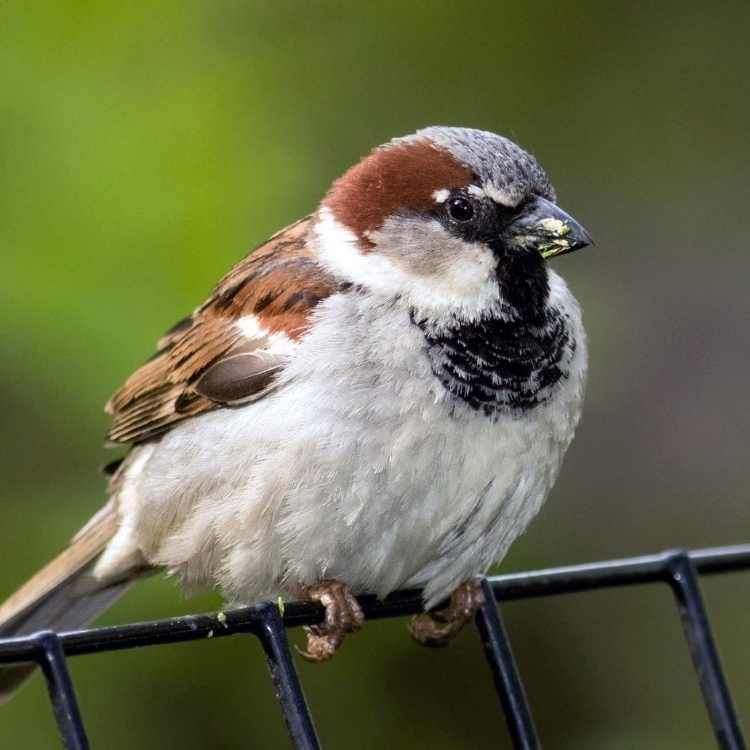
In America, there are currently 150 million specimens.
- Name: Passer domesticus.
- Family: Passeridae.
- Size: 6.3 inches.
- Wingspan: 7.5–9.8 in.
- Weight: 24-39.5 g.
- Body: small but robust, comparatively large head and well-developed beak.
- Diet: They are a granivorous and insectivorous species.
- Habitat: the house sparrow‘s origin is from Eurasia and North Africa, but nowadays it is distributed all over the world, in urban and temperate areas.
Fun facts
- World Sparrow Day is celebrated worldwide on March 20 to remember the importance of this small, unnoticed bird.
- Parents will abandon the clutch (eggs or chicks) at the first sign of threat.
- The global sparrow population has suffered a disturbing decline in recent decades.
3. House Wren
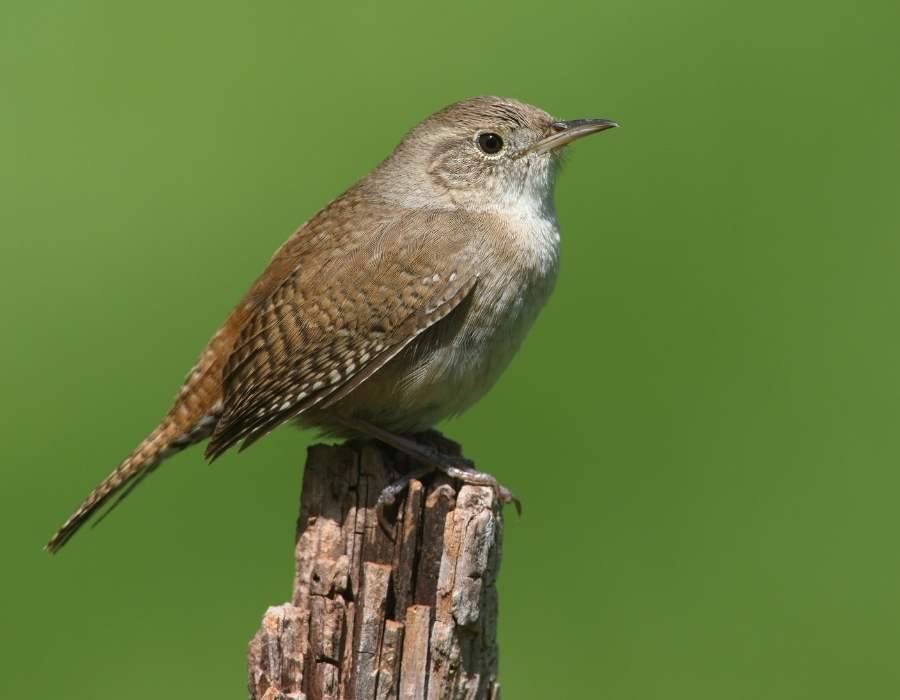
For a long time, it was called “the king of the snow”, since it sings animatedly also in winter.
- Name Troglodytes aedon.
- Family: Troglodytidae.
- Size: 5 in.
- Wingspan: 5.9 in.
- Weight: 12 g.
- Body: It is a small, stocky, narrow-tailed bird.
- Diet: Feeds on insects and arachnids found on plants or the ground.
- Habitat: the wren is commonly found in semi-open areas, grasslands, reedbeds, villages, forest edges, dry forests, and shrub thickets.
Fun facts
- The oldest recorded House Wren lived for about 9 years when it was recaptured and re-released during banding operations in New York in 1993.
- During the breeding season, males usually sing between 9 and 11 times per minute.
- Commonly its nest is parasitized by other bird species such as Molothrus bonariensis.
4. The song sparrow
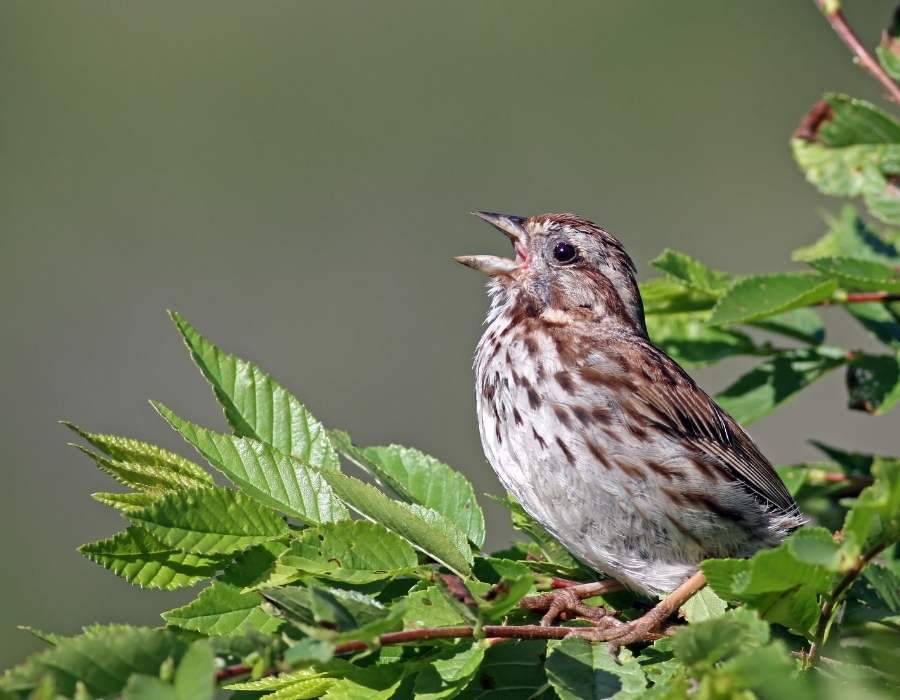
This is a common species throughout North America.
- Name: Melospiza melodia.
- Family: Emberizidae.
- Size: 5.8-7.5″
- Wingspan: 7.1 to 10.0 in.
- Weight: 19 g.
- Body: A compact bird with a full breast and a large rounded head.
- Diet: insects during the summer and seeds in winter.
- Habitat: the song sparrow prefers shrubby areas and marshes, including saltwater areas in Alaska, Canada, and the U.S., stream banks, marsh edges with thickets, forest edges, hedgerows, and gardens.
Fun Facts
- During courtship, sparrows emit up to 12 distinct two-second sounds, a repertoire that can last for nearly 30 minutes.
- Males that are better at changing the order of their songs so as not to repeat them are more likely to mate.
- They have a memory capacity 360 times greater than that of canaries.
5. Carolina Wren
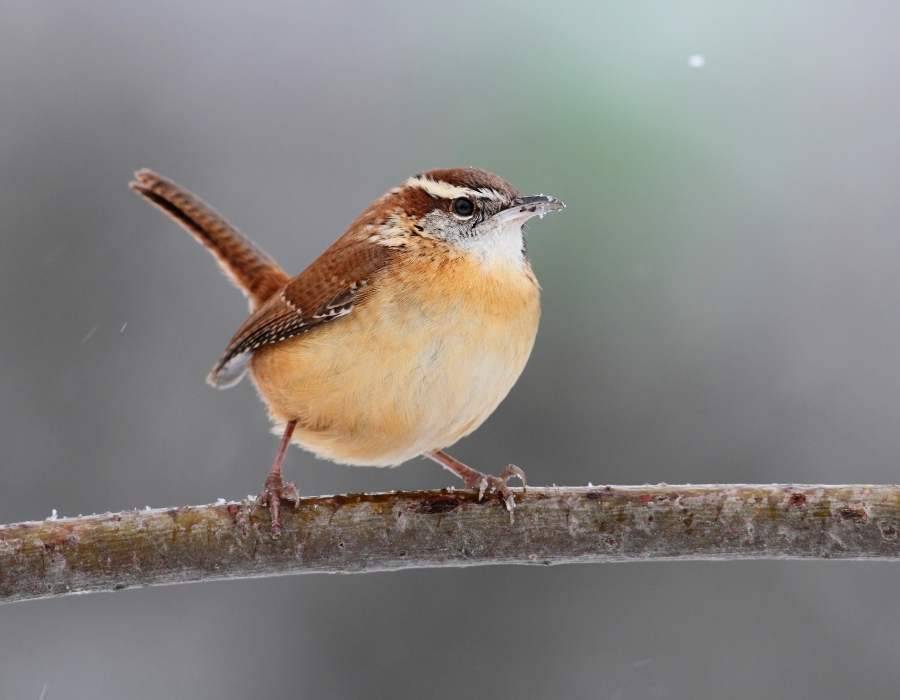
Carolina Wren is a year-round resident of the southeastern United States.
- Name: Thryothorus ludovicianus.
- Family: Troglodytidae.
- Size: 4.72 – 5.51 in
- Wingspan: 11.4 inches.
- Weight: 20 g.
- Body: have a long, slender beak that curves downward, pink legs, and a long tail.
- Diet: feed on insects, larvae, and spiders, although they also consume berries and fruits.
- Habitat: Native to eastern Canada, the United States, Mexico, Belize, Guatemala, and Nicaragua. The Carolina wren inhabits forests, swamps, farms, and human communities where trees are abundant.
Fun Facts
- It is the only member of the genus Thryothorus.
- The tone of its song is one of the most powerful of all birds concerning body volume.
- After finding a mate, pairs maintain a territory and remain together for several years.
6. Chipping Sparrow
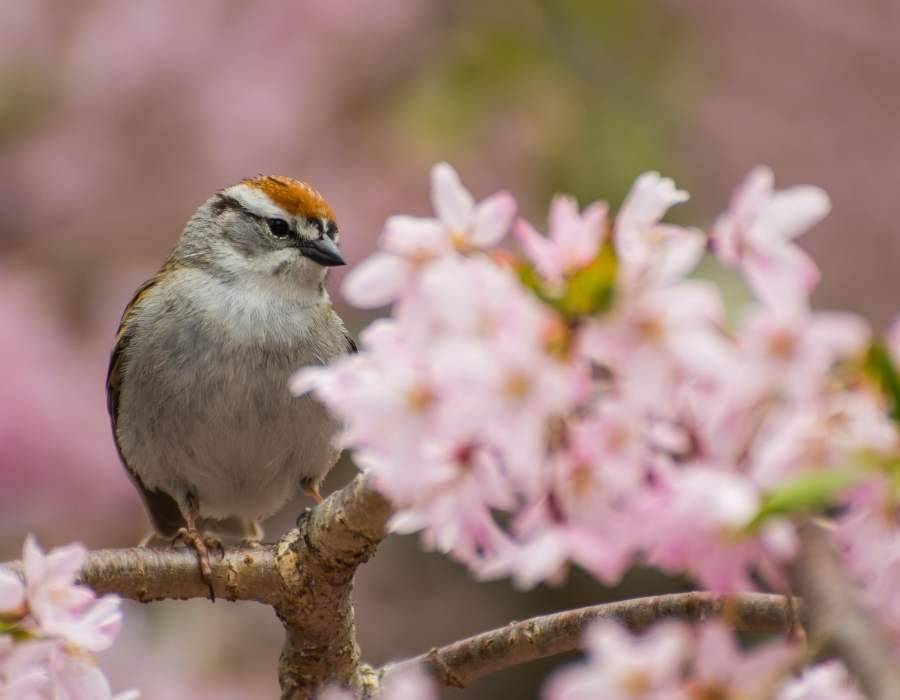
They are quite common in Tennessee in the summer and can grow quite confident.
- Name: Spizella passerina
- Family: Passerellidae
- Size: 4.75 inches
- Wingspan: 8.3 inches.
- Weight: 11-17 g
- Body: The male is slightly larger than the female, but the female is heavier than the male.
- Diet: seeds and insects. Can survive for a long time on dry seeds and without water.
- Habitat: the chipping sparrow likes dry open woodlands, pine and oak forests. Found in lawns, grassy fields, orchards, and parks.
Fun Facts
- The oldest chirping sparrow was 11 years and 10 months old.
- Can molt face and throat feathers up to six times a year.
- When the United States was a more rural country, it was famous for using horsehair in its nests.
7. Wood Thrush
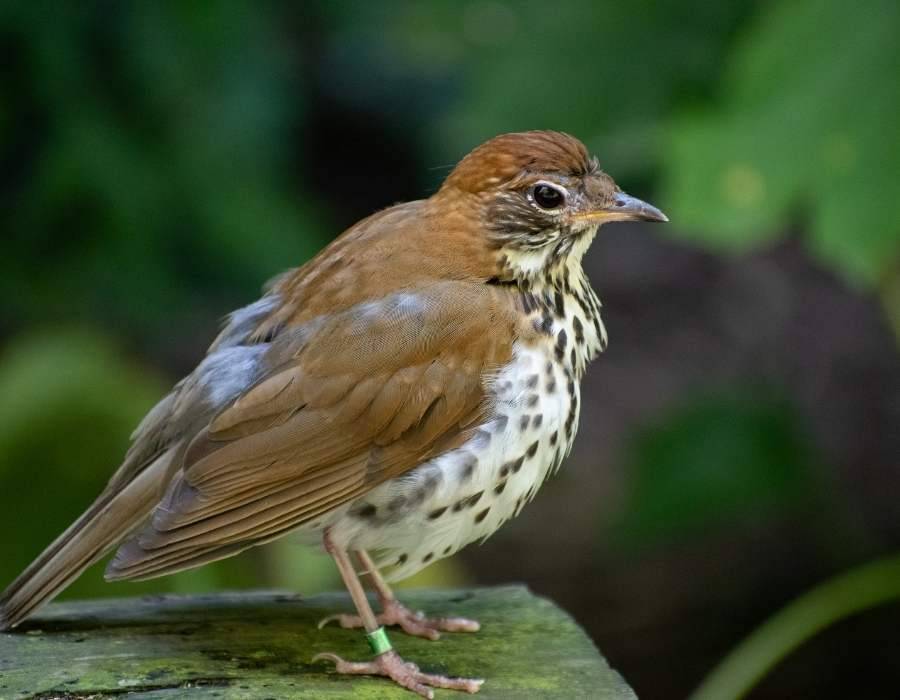
This bird is more often heard than seen, and its song is like that of a flute.
- Name: Hylocichla mustelina.
- Family: Thrush.
- Size: 8 inches.
- Wingspan: 13 inches.
- Weight: 43 g.
- Body: large head, short tail, straight bill.
- Diet: insects, worms, snails, berries, fruits.
- Habitat: temperate forest and tropical and subtropical rainforest.
Fun Facts
- When in danger it raises its head feathers.
- Their songs are complex, males can create a 3-part song with different variations.
- They can sing up to 50 songs.
8. American Tree Sparrow
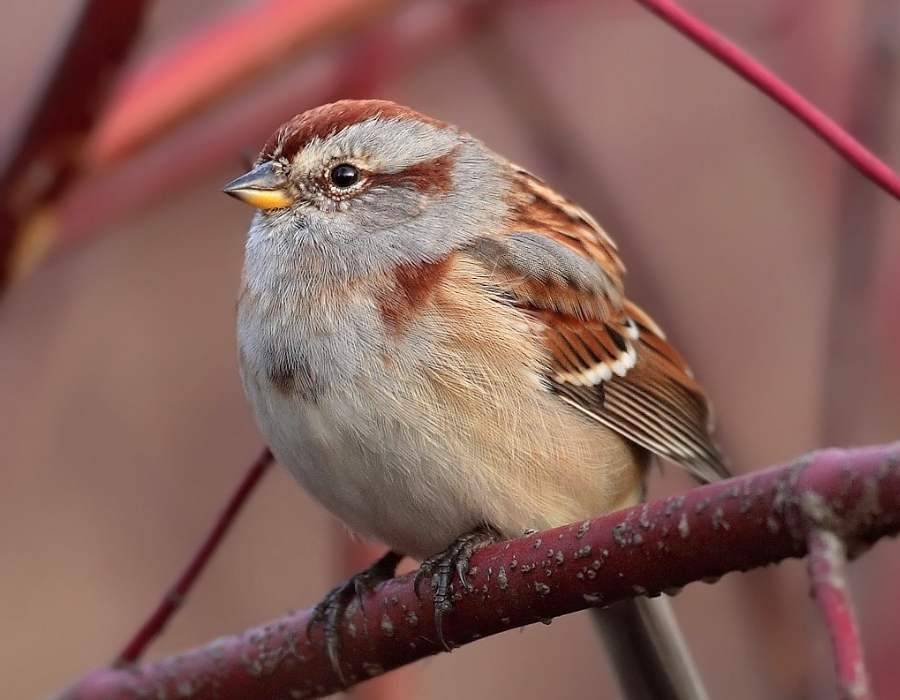
Despite its name, it is not particularly related to trees.
- Name Spizelloides Arborea.
- Family: Passerellidae.
- Size: 5-6 inches.
- Wingspan: 8-9 inches.
- Weight: 18 to 26 g.
- Body: stubby, small bill, and a long slender tail.
- Diet: seeds of grasses, weeds, insects, and berries.
- Habitat: Low arctic shrubs and trees, willow thickets.
Fun Facts
- They usually watch for predators with their left eye.
- American Sparrow females build their nests on the ground, not in trees.
- When the ground is covered with snow, they fly around a weed plant and use their wings to dislodge its seeds.
9. Pine Siskin
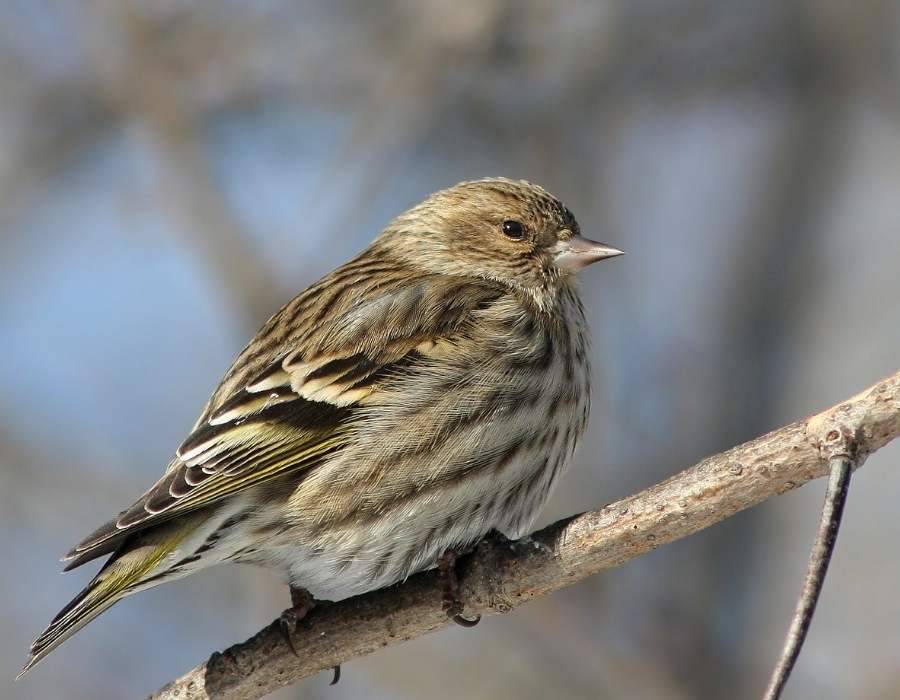
Can be quite vocal; listen for its distinctive buzzing sound like a zipper being closed.
- Name: Spinus pinus
- Family: Fringillidae
- Size: 5.6 in
- Wingspan: 5.6 in
- Weight: 12-18 g
- Body: it has a slender body with long wings and an elongated, sharp, conical bill, its tail is generally forked or forked.
- Diet: cereal and sunflower grains, insects, and to a lesser extent, small amounts of fruits and vegetables.
- Habitat: generally nests in open coniferous or mixed forests, parks, and cemeteries.
Fun Facts
- They usually lay up to 5 eggs whose color is white and have fine reddish spots that distinguish them.
- In ancient times it was bred in captivity for its beautiful song, similar to canaries.
- It has a pouch in its throat specially designed to store food and can store 10% of its weight.
10. Little Bunting
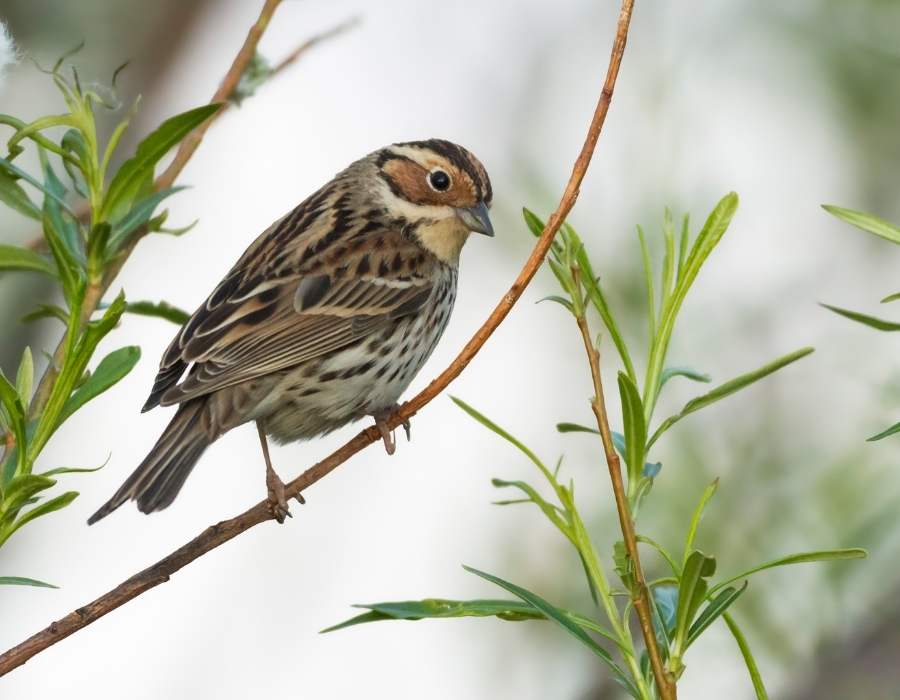
This is one of the Passeriformes of the world, which means that it is a perched bird.
- Name: Emberiza pusilla
- Family: Emberizidae
- Size: 4.7-5.5 in
- Wingspan:
- Weight: 15 g
- Body: compact, with a smaller and more pointed bill.
- Diet: Invertebrates, seeds, and some plant parts.
- Habitat: The little bunting is generally found in northeastern Europe, India, and northern Southeast Asia. Breeds in moist wooded edges of swampy marshes among birch and willow trees, northeastern Finland and eastern Lapland.
Curious Facts
- The German botanist and zoologist Peter Simon Pallas first described this bird in 1776.
- The common bunting is monogamous.
- In autumn and winter, it usually shares the night roosts with the marsh bunting.
